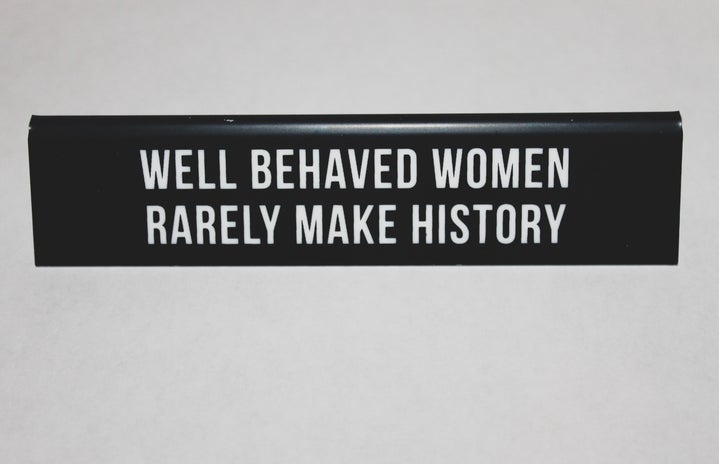2. The majority of misogynists are men.
Although it’s difficult to pinpoint exactly where misogyny stems from, it is blatantly obvious that the majority of misogynistic behavior is demonstrated by men. Since it comes in many forms like violence, hostility, sexual objectification and discrimination, supremacy and more, and realizing that society has not advanced that much since the time where we needed Rosie the Riveter, and a court ruling to even allow birth control, it’s easy to understand that men are still the overall culprits.
3. It’s not just men.
While misogyny is usually projected by males, females can certainly be misogynistic as well. Think about the idea that certain women, because they drink, smoke, are provocative, etc., are in some way inherently worse than women who refrain from such activities. The majority of people with this opinion are, in fact, women. Why is this? Society loves to pit women against each other, ranking them based on trivial and biased criteria. If we want to put an end to misogyny and further advocate women’s empowerment and equality for all, women need to take responsibility as well.
4. Misogyny is internalized.
A lot of people, or, perhaps, it’s safe to say, most people, who exhibit misogynistic behavior do not realize it. It’s often a subconscious phenomenon that occurs, stemming from sexist societal stereotypes. The beliefs that a woman’s worth is determined by her sex life (or lack thereof), that women are valuable to men solely for sex, that women are mentally unstable or overly emotional because they are statistically more likely to seek help from a doctor for mental illness, etc. are all sexist thoughts that promote and lead to the advancement of misogyny.
5. We can put an end to it.
It will take an insane amount of work, but stopping misogyny is not as much of a pipe dream as one may think. We live in a world where new feminist voices are emerging every day and people are speaking out about their want and need for a more equal world. Times are changing and women’s fight is getting easier every day, even if it’s by a miniscule amount. Look at where women were one hundred years ago; no voting rights, limited work opportunities, etc., and look at where we are now. Although it may seem grim, the future is incredibly bright!



